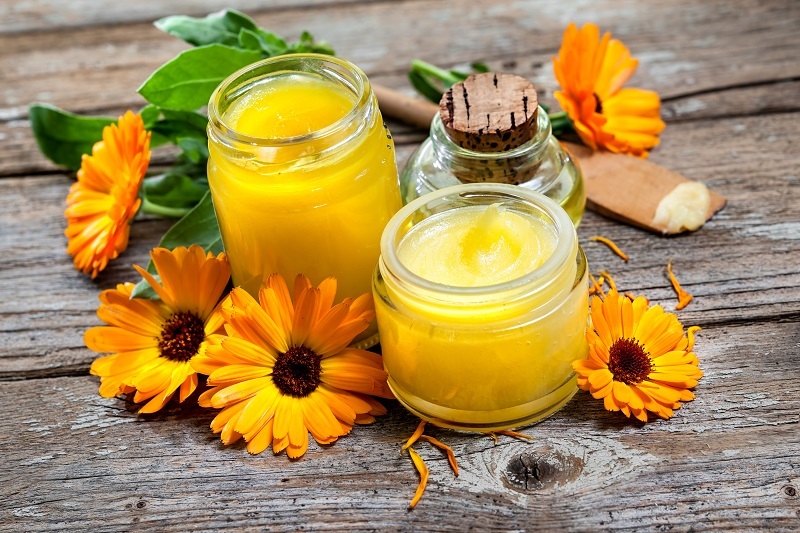7 Mind-Blowing Facts About Tulips That Will Change Your Perception
Posted on 27/08/2025
7 Mind-Blowing Facts About Tulips That Will Change Your Perception
Tulips are among the most beloved and recognizable flowers in the world. They often appear in lush spring gardens, vibrant fields, and exquisite bouquets. However, there's much more to these colorful blooms than meets the eye. Below are seven mind-blowing tulip facts that will truly transform how you view these iconic flowers.
1. Tulips Sparked One of the First Financial Bubbles in History
When you think about financial bubbles, modern stock markets may come to mind. But did you know the tulip was at the center of one of the world's earliest recorded economic bubbles? The period known as "Tulip Mania" occurred during the Dutch Golden Age in the early 17th century.
Tulip Mania: The Flower That Drove Speculators Wild
- In the 1630s, rare and unique tulip bulbs became a luxury item, prized for their exotic beauty.
- Prices soared, with some bulbs selling for more than ten times a skilled craftsman's annual salary.
- At the height of Tulip Mania, people traded homes, land, and livestock for a single bulb!
- The bubble burst dramatically in 1637, leading to financial turmoil.
This phenomenon has become a cautionary tale about market speculation and human psychology.

2. Tulips Aren't Originally from the Netherlands
Although the Dutch tulips are world-renowned, tulips are not native to the Netherlands. Their true origins trace back to the mountains of Central Asia, where wild tulips have grown for centuries.
From the Wilds of Asia to Dutch Glory
- Tulips were first cultivated in the Ottoman Empire (modern-day Turkey), where they symbolized wealth and abundance.
- The flower's name comes from the Turkish word for "turban" due to the blossom's shape.
- In the 16th century, tulip bulbs were introduced to the Netherlands by botanist Carolus Clusius. The Dutch climate proved ideal for their cultivation, and the rest is history!
Today, the Netherlands remains the largest global exporter of tulip bulbs, but the flower's story begins far from Dutch fields.
3. Tulips Come in Virtually Every Color--Except One
If you can imagine a color, you can probably find a tulip in that hue. From deep purples to fiery reds, sunny yellows, and even near-black, tulips paint gardens with a dazzling array of shades.
The Quest for the Elusive Blue Tulip
- Despite their variety, no true blue tulip exists in nature.
- While breeders have developed purple and violet varieties, a genetically true blue tulip remains elusive.
- Blue pigments are difficult to produce naturally in tulips, and scientists continue to work on this botanical challenge.
Did you know? The color "black tulip" is actually a very deep maroon or purple, made famous by Alexandre Dumas's novel The Black Tulip.
4. Tulip Flowers Are Edible--and Were Eaten in World War II
While you might hesitate at the idea of eating flowers, tulip petals are actually edible and have played a crucial role in times of hardship.
Survival Food During Famine
- During the Hunger Winter of World War II in the Netherlands (1944-1945), food was in such short supply that people turned to eating boiled tulip bulbs to survive.
- While not particularly flavorful, tulip bulbs saved countless lives when other food sources were scarce.
- Today, tulip petals are sometimes used as garnishes in salads, though only those free from pesticides and grown specifically for consumption.
Caution: Always research before consuming any flower, as some varieties can be toxic if not prepared properly.
5. Tulips Represent Deep Symbolic Meanings
All flowers convey meanings, but tulips are especially rich in symbolism, carrying messages that vary by color and culture.
What Do Tulips Symbolize?
- Love and Romance: Red tulips are classic symbols of true love and passion.
- Forgiveness: White tulips stand for forgiveness and purity.
- Cheerfulness: Yellow tulips are associated with joy and sunshine.
- Royalty: Purple tulips symbolize regality and elegance.
- The flower in general signifies perfect love and rebirth, as they bloom with the arrival of spring.
In Persian and Turkish poetry, tulips symbolize both divine love and mortal passion.
6. The Netherlands Becomes a Sea of Tulips Each Spring
The association between tulips and the Netherlands is so strong that it's hard to imagine Dutch landscapes without them. Every spring, vast fields and gardens explode into a kaleidoscope of color, attracting visitors worldwide.
Keukenhof: The Garden of Europe
- The Keukenhof Gardens near Lisse, Netherlands, is the largest flower garden in the world and showcases over seven million tulip bulbs every season.
- From March to May, visitors can see fields stretching as far as the eye can see, blanketed in vibrant bands of color.
- Millions of tourists come each year for the annual Tulip Festival, making it a bucket-list event for flower lovers.
If you want to witness the magic of Dutch tulips in bloom, this is a truly unforgettable experience.
7. Tulips Have Inspired Art, Literature, and Fashion
Beyond gardens, tulips have been a source of inspiration for centuries, finding their way into everything from timeless art to haute couture.
Famous Examples of Tulip Influence
- Painters from the Dutch Golden Age, like Rembrandt and Jan Brueghel, included tulips in many of their still-life masterpieces.
- In the Ottoman Empire, tulips appeared on intricate ceramics, royal robes, and architectural designs, becoming a symbol of prosperity and power.
- Even today, tulip motifs grace everything from wallpaper and fabric to jewelry and runways.
- Writers such as Alexandre Dumas and contemporary poets have used tulips as symbols of mystery, beauty, and fleeting love.
The influence of tulips stretches far beyond the garden, leaving an indelible mark on culture and creativity.
Why Tulips Continue to Captivate the World
With their storied history, vibrant beauty, and rich symbolism, it's no wonder tulips remain one of the world's favorite flowers. Whether you view them in a blazing Dutch field, gift them as a token of love, or marvel at them in a centuries-old painting, tulips are full of surprises.
In summary, these 7 remarkable facts about tulips reveal just how extraordinary these flowers truly are:
- Tulips caused the world's first financial bubble
- They originated in Central Asia, not the Netherlands
- They bloom in almost every color imaginable--except blue
- Tulip petals served as survival food during WWII
- They are imbued with a spectrum of symbolic meanings
- The Netherlands becomes a tapestry of tulips every spring
- Tulips inspire art, literature, and style across cultures

How to Grow and Enjoy Tulips Yourself
If you're inspired by these fascinating tulip facts, why not bring their magic to your own garden? Growing tulips is easier than you might think:
- Plant bulbs in the fall, before the ground freezes, to ensure a beautiful spring display.
- Choose a sunny spot with well-drained soil for healthiest plants.
- After flowering, let the leaves die back naturally for bulbs to recover energy for the next season.
- Try different varieties: fringed, parrot, double, or classic single tulips.
With minimal effort, you can enjoy a carpet of dazzling tulips each spring and become part of this flower's ongoing story.
Conclusion: The Enduring Allure of Tulips
From their dramatic impact on history and economics to their role in art and daily life, tulips are so much more than simple garden flowers. As you've learned, their story is global, colorful, and full of surprises. The next time you see a tulip, take a moment to appreciate its exceptional journey--from the mountains of Asia to the heart of Dutch culture and beyond.
Tulips will always amaze with their beauty, resilience, and fascinating past. Now that you know these seven mind-blowing facts about tulips, you'll never look at them the same way again!
Explore More About Tulips
- Learn more about the history of tulips
- Plan a visit to the Keukenhof Garden
- Tips on growing tulips in your own garden
Unlock the magic of tulips and let their incredible story inspire your love for flowers!
Latest Posts
7 Mind-Blowing Facts About Tulips That Will Change Your Perception
Practical Tips to Maintain the Freshness of Your Florals
Caring for Orchids: A Practical Guide





